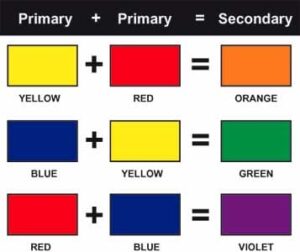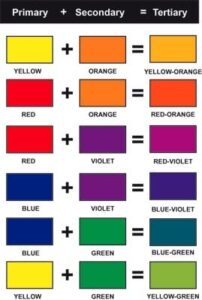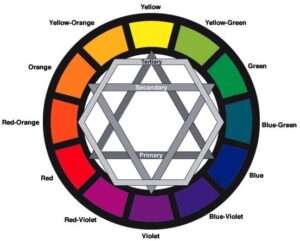
29/09/2020
In order broaden our horizons in relation to colors and how they work, it’s interesting to understand that we have 12 colors in the color circle. Of these, we have 3 primary colors, 3 secondary colors and 6 tertiary colors.
“Wait…what? This is already complicated” – calm down. Looking at the picture, we can quickly detect the primary colors (red, yellow and blue). With these colors, we have three possible combinations between two of them, don’t we?

These combinations will generate the secondary colors (let’s picture 1 + 1 = 2).
So, by mixing the primary colors, we get the secondary colors (orange, green and purple). Now that we have the secondary ones, we can mix them with the primary ones, thus obtaining the tertiary colors (let’s think 1 + 2 = 3).

And then, within that whole spectrum, we can go crazy adding black or white to any of these colors to move to lighter or darker tones within that chosen color. This is how monochromatic combinations (ton sur ton) are made.
But what if I want to make a brown one? A gray? We realize, then, that the colors “move” to each other, don’t we? Between yellow and red there will always be orange. Between blue and yellow there will always be green. The colors then have their fixed positions in the color circle.

Looking at the circle, we will see that for any color you choose, there will be an exact opposite that corresponds to it. For blue, we have orange. For yellow, we have purple. Red opposes green and so we go for each secondary, tertiary color. These opposite colors, when mixed, will always move towards a neutral color, such as brown, a grayish tone (depending on how much white is added) or even something close to black.
To get to black, we would have to mix the primary colors in equal amounts, that is, yellow, red and blue combined would make black. Yeah, but yellow and red in equal amounts give orange, right? So… mixing blue and orange will achieve the same result. And there you have them: blue and orange are exactly opposite colors in the spectrum.

